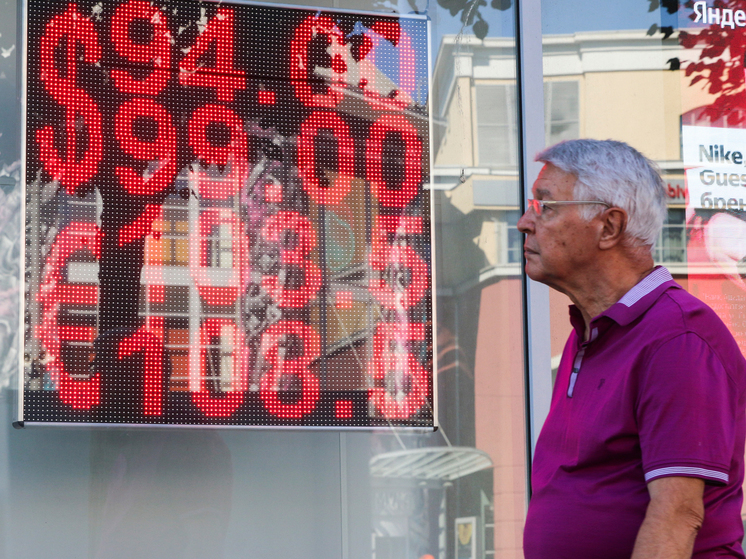Expert Belyaev believes that the government will not manage the currency corridor manually
According to the forecast of financiers, the deviation of the current ruble exchange rate from the forecast made by the government at the beginning of the year could cost the federal budget dearly. The following figures are cited: if the national currency «does not come to its senses» and does not weaken in the time remaining until the end of the year, the treasury could lose 500-750 billion rubles. Does this mean that the state does not need a strong ruble?

Some Russians are rightfully proud that our national currency is not affected by any economic sanctions: the ruble is not weakening! But some economists are completely upset. According to the government's plan for 2024, the dollar was supposed to cost 93 rubles in July, but it cost only 87 — how can this be?
According to the Central Bank, in July the average value of the national currency against the dollar was 88 rubles. A whole 6 rubles less than planned by the government scenario back in April. At that time, Cabinet officials expected the average annual dollar exchange rate to be 94.7 rubles. And in December, according to the Cabinet's plans, the dollar was supposed to cost 98.1 rubles.
In general, the ruble has clearly strayed from the course — at least the one planned by the government. Since the beginning of the year, instead of gradually weakening, it has begun to strengthen — by 4.5%, from 90.4 rubles in January to 86.5 on July 30. This dynamic has completely refuted the opinion of some economists that the ruble exchange rate is determined not by the market, but by the “wants” of the monetary authorities. They say that whatever the exchange rate they want to see, that’s what they’ll draw. In reality, as we can see, everything is not so simple…
It is clear that every penny is precious to a budget with a deficit. And here — due to a blunder with the exchange rate — almost a trillion rubles may fall out of it, according to financiers’ calculations. However, analysts believe that these risks may be offset by higher oil prices and faster GDP growth.
On the other hand, there are still a good 5 months until the end of the year. If we weaken our currency against the dollar by 2 rubles per month, we can reach the limits set by the government forecast. But is this realistic?
— Generally speaking, attempts to manipulate the national currency rate do not do credit to any government, including the Russian one, — believes financial analyst, PhD in Economics Mikhail Belyaev. — The ruble rate depends on the general state of the economy and cannot be molded by someone's «will and command». In this case, to fill the budget, it must be set completely man-made. We can fill the budget, but then we will distort the entire economy.
— Until June 12, the ruble exchange rate was formed as a result of exchange trading, from the ratio of supply and demand. The exchange rate formation was not ideal, but it was minimally subject to external, that is, state influence. Today, the rate is calculated based on over-the-counter trading data and, to a certain extent, manually. But it is closer to real economic values in relation to the dollar. It is known that the exchange rate of our national currency is greatly undervalued. In the ranking of countries by GDP, our country is in 10th-11th place, and if we consider by purchasing power, which is more objective, then in a solid 4th place. The ruble still has some resources for strengthening.
We can «cheat» and set, for example, not 87 rubles per dollar, but 93 or 95. As much as is needed to fill the budget. But in doing so, we will strike a blow to other sectors of the economy. Theoretically, it is possible to weaken the national currency manually, but we will have to abandon the floating exchange rate of the ruble. Draw, for example, 95 rubles and pass it off as the Central Bank rate.
— Even if the treasury loses 750 billion rubles, this is not at all critical. Our budget is about 35 trillion. In addition, there are tools that will cover the deficit. For example, an internal loan of 750 billion, the issue of bonds at a certain interest rate. I assure you: they will be gladly bought by both individuals and corporations, and our partners from friendly countries.
Our total public debt is less than 20% of GDP. There are countries where it reaches 100%, and they live and develop normally. Therefore, one of the ways to cover the budget deficit is to increase your domestic debt. True, the interest on bonds should be very decent, otherwise no one will buy them. After all, now the bank rate on deposits is — almost 20%.


